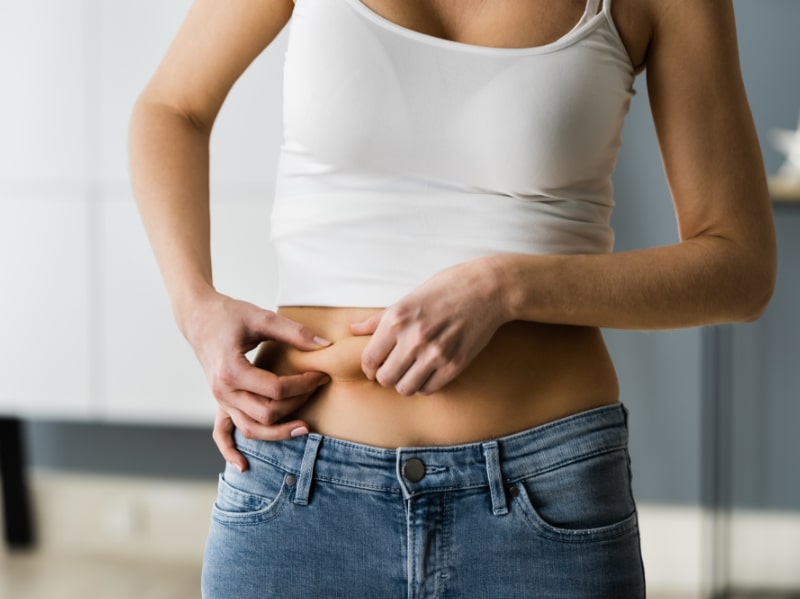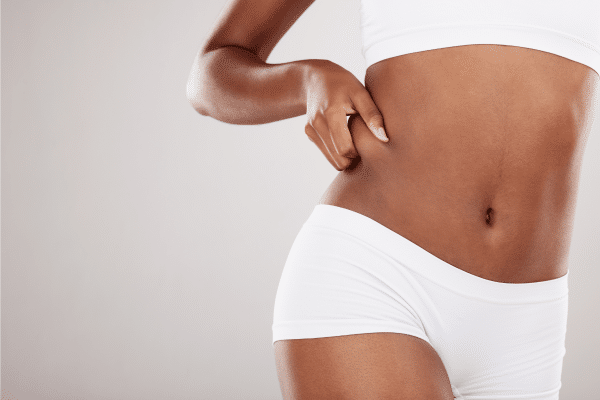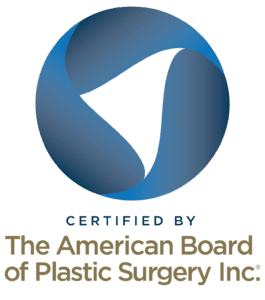
You look in the mirror every morning when you get out of the shower. There it is again – that stubborn fat on your belly that you can’t get rid of no matter how much you run on the treadmill. You’re so tired of looking at that fat that you’re ready to rip it off! We get it!
Diet and exercise are your main tools to eliminate body fat. But they aren’t always effective on certain stubborn body parts. Men, for example, often battle abdomen fat and love handles. For women, they struggle with the abdomen, hips, thighs, and rear. some even consider having a tummy tuck as well as liposuction surgery. After so many hours pounding the pavement or cranking away on the bike, you see yourself in the mirror, and the fat is still there!
Maybe it’s time to give Lipo 360 in Houston a try. Liposuction is useful for eliminating those annoying, stubborn fat pockets that diet and exercise won’t destroy. Picture it – just a straightforward surgery can suck away the fat that’s been tormenting you for years!
Below is important information about how liposuction works, types, safety, side effects, and more.
How Does Liposuction Work?
The liposuction procedure uses suction to take out fat cells from specific areas of your body, including the abdomen, thighs, hips, buttocks, arms, or neck. Liposuction can help contour these areas, so you love the shape you see when you look in the mirror. Liposuction also is known as lipoplasty and body contouring.
Note that liposuction isn’t a way to duck regular weight loss with diet and exercise. If you’re carrying around too many pounds, you’ll lose weight better with diet and exercise than liposuction.
You could be the perfect candidate for a liposuction procedure if you are of average weight but have stubborn fat pockets in certain areas.
Types of Liposuction
Liposuction has come a long way, and you have several different types of liposuction options available to eliminate that annoying fat pocket.
Tumescent Liposuction
This is the most popular type of liposuction procedure. Some refer to this as traditional liposuction. Your plastic surgeon inserts a saltwater solution, lidocaine, and epinephrine into the area you want to treat. The solution helps to relieve pain and reduce bleeding. These fluids make the area stiffen and swell.
Your surgeon will make small incisions in the skin and inserts a cannula to vacuum the excess fat out of your body.
Ultrasound-Assisted Liposuction (UAL)
Your plastic surgeon will insert a special rod under the skin that emits ultrasonic energy. This damages the walls of fat cells and breaks them down so they can be easily sucked out.
A new type of UAL known as VASER-assisted liposuction can enhance skin contouring and lower the chance of skin injuries.
Laser-Assisted Liposuction (LAL)
This form of liposuction procedure uses a high-intensity laser to break down your fat for removal. Your surgeon inserts a tiny laser fiber through small incisions and liquefies your fat deposits. The fat is then sucked out with a cannula.
Power-Assisted Liposuction (PAL)
This type of liposuction features a cannula that is moved in a quick back-and-forth motion. The vibration allows your surgeon to suck out tough fat more efficiently. This liposuction technique can cause less swelling and pain and can allow her to remove fat more precisely. Your surgeon may use this option if you have a lot of fat cells to remove or you’ve had liposuction surgery before.
Liposuction Safety
Plastic surgery is safer than ever. Regarding liposuction safety, risks are minimal because the procedure isn’t especially invasive. That said, there are rare complications such as a fat embolism that occur but are rarely an issue if a certified plastic does your surgery surgeon. If however you experience something like a fat embolism it is important to contact your surgeon immediately.
A study done by the Journal of the American Society of Plastic Surgeons looked at 1,000 cases of severe liposuction complications. The study concluded that most would have never happened if proper safety protocols were followed.
The bottom line: A properly trained and certified surgeon will rarely cause serious harm during liposuction.
The vast majority of patients have no severe complications and recover within a week or two.
Liposuction Recovery and Side Effects
After your liposuction surgery, you can expect some bruising, swelling, and pain. Your plastic surgeon may give you medication to reduce the pain, as well as antibiotics to fight infection. For your own sake, review this article on liposuction results week by week to be completely prepared.
Your surgeon may leave some incisions open and place drains to encourage fluid to drain. You’ll be fitted with a compression garment to reduce swelling and help your skin adapt to your new shape.
Most liposuction patients recover well and can go back to work after a few days. Expect to wait a few weeks to start strenuous exercise again.
Like any surgery, liposuction has risks. While most people experience no serious liposuction side effects, some complications include:
- Contour irregularities: Skin can appear bumpy or wavy because of uneven fat removal or poor skin elasticity. These could be permanent changes that can only be corrected by more surgery.
- Fluid accumulation: Pockets of fluid can develop under the skin and may need to be removed with a needle.
- Numbness: You could feel numbness in the treated area, and sometimes it can be permanent.
- Infection: Skin infections occur rarely but are possible.
- Internal puncture: The cannula can go too deep and puncture an internal organ.
- Fat embolism: Loosened fat pieces can break off and get trapped in the blood vessels. This is a medical emergency.
Questions and Answers
What are the negative side effects of liposuction?

Accumulation of Fluid: Fluid buildup in treated areas can occur, leading to swelling and discomfort.
Numb Sensations: Temporary or prolonged numbness might be experienced in treated regions due to nerve response to the procedure.
Risk of Infection: There is a possibility of infection in the treated area, which can lead to pain, redness, and swelling.
Internal Puncture: Accidental puncture of internal organs during the procedure could cause complications and require further medical attention.
Fat Embolism: Fat particles entering the bloodstream can cause blockages, potentially leading to severe health issues.
Impacts on Kidneys and Heart: Certain procedures may strain the kidneys and heart, posing risks to individuals with pre-existing conditions.
Toxicity from Lidocaine: Excessive use of lidocaine, a local anesthetic, can result in toxicity, leading to adverse reactions and complications
What happens to your body after liposuction?
Following liposuction, swelling usually subsides within a few weeks, leading to a reduction in the treated area’s bulkiness. Over the course of several months, the treated area tends to appear slimmer. While skin naturally loses some firmness with age, liposuction results can endure for an extended period, provided you maintain a stable weight.
What don’t they tell you about liposuction?
Liposuction has the potential to exacerbate loose and sagging skin. Employing liposuction to eliminate fat from areas already affected by loose excess skin can result in a wrinklier appearance. Hence, your liposuction surgeon conducts a thorough evaluation of your skin during the consultation, assessing its firmness and elasticity, to determine the suitability of the procedure.
Is liposuction traumatic for the body?
In the liposuction procedure, the surgeon employs a cannula to remove surplus fat from the targeted area, inducing tissue trauma that prompts the body’s innate inflammatory response.
How long does liposuction last?
Liposuction is a permanent body contouring procedure. Liposuction results are deemed permanent as the body cannot generate new fat cells to replace those removed during the procedure. Nevertheless, it remains crucial to uphold a healthy lifestyle post-surgery because it is still possible to gain weight after liposuction.
How painful is liposuction?
Liposuction typically isn’t very painful since you’ll likely be under general anesthesia during the procedure. However, after waking up from the surgery, you may experience significant discomfort.
How much weight can you lose with liposuction?
If you have already reached your desired weight, liposuction can typically result in a fat loss of one to three pounds. If you have not yet achieved your goal weight, it might be possible to safely lose around 10 to 11 pounds through liposuction, depending on your body mass.
Request a Houston Liposuction Consultation
Interested in having that annoying fat sucked away with liposuction? You need to set up a Houston liposuction consultation with Dr. Ashley Steinberg today. She’ll talk to you about the benefits and risks of liposuction and determine if you’re an ideal candidate.
References
- Strategies for Reducing Fatal Complications in Liposuction. (October 2017). Accessed at https://www.ncbi.nlm.nih.gov/pmc/articles/PMC5682182/
- About Liposuction. (n.d.). Accessed at https://www.mayoclinic.org/tests-procedures/liposuction/about/pac-20384586












